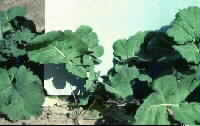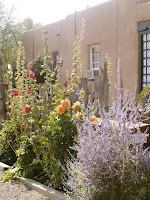
Ralph Waldo Emerson is the author of many well-known sayings -
"Build a better mousetrap, and the world will beat a path to your door" being perhaps the most famous of them.
When he was creating this particular aphorism the American writer and thinker had actually hoped to say something pithy about squirrel-proof bird feeders, but even his metaphysical philosophy could not transcend (ro)dental machinations -- so he gave up and went for the easy winner.
Now -- almost 130 years after Emerson's death and 30 years after Mars I and began feeding our local feathered friends (and by definition our native tree-dwelling rodents as well) -- Emerson's epigrammatic enigma has been solved. Twice!
We started back then with one basic "Droll Yankee" bird feeder -- sunflower seeds, plastic tube, metal perches -- handy for the avian guests who queued up on the surrounding bushes waiting for their turn, and a sitting-duck to the ravenous rodents who gnawed though the polyethylene, inhaled the black, oily kernels, and sharpened their teeth for more damage on the stainless steel.
I persisted.
("A foolish consistency is the hobgoblin of little minds." ibid)After several identical replacements our son Bram gifted us with a "soda-bottle" feeder, which used the aforementioned container as the seed-holder on to which a metal feeding perched was screwed.
The plastic therein also fell victim to the tree-rats at about the same rate as their more expensive predecessors -- but were instantly replaceable, thanks to an endless supply of empty soft drink containers that we collected from relatives and friends. I was losing each battle, but figured that, based on the law of large numbers, I was winning the war.
Then, last Christmas, our brother-in-law gifted us a "squirrel proof feeder". And it actually was, for almost four months. I retired the soda-bottle feeder. Then, as
documented in this space on 4/26/10, the squirrels once again emerged victorious. But now, having temporarily experienced the thrills and excitement of a safely secured feeder, I did not want to return to my routine of thrice-weekly bottle replacement.
I looked online. But I could not find anything that satisfied my singular stringent specification -- no plastic in any place that the squirrels could, in any way, reach. So I drove across the Connecticut River to our neighboring town of Glastonbury to visit the Wild Birds Unlimited emporium.
While I browsed and got over my initial sticker shock, I eavesdropped on a conversation between another customer and the store manager. The topic was a partially eaten "squirrel proof" feeder that the client had brought in to see if it was repairable. It was -- and perhaps was even under warrantee.
I wondered, who was more delusional -- the purchaser who believed they were actually getting something impregnable to tree-rats, or the manufacturer who imagined that they would not have to honor every single guaranteed product?
When my turn came we talked about my one steadfast requirement, and jointly came up the "seed tube within the cage" solution. I selected a plastic feeder with a metal top and bottom, and a metal cage of compatible height that was wider enough so as to make the seed-holder unreachable.

(click on picture to enlarge
I assembled my new s.p.f. and apprehensively hung it up. After about ten minutes of frustration and bafflement the squirrels realized that the outside basket tilted under their weight, whereas the feeder-proper remained vertical -- thereby rendering it close enough to be grabbed. And I realized that I needed to tie the bottom of the food silo to the bottom of the cage. I did. It worked. It still does.
("A good indignation brings out all one's powers." ibid) Then, two weeks ago, our neighbors across the street gave us a "Critter Feeder" and a bag of "Critter Food". The eating station has a metal top and bottom with a glass cylinder between them. The feeding holes at the bottom are designed to accommodate big chunks of food (unshelled peanuts, large corn kernels, etc.) - all of which are contained in the critter mix.
It is, in short, an indestructible eatery tailor-made for squirrels.

(click on picture to enlarge
On any given day we have between four and six of them cavorting on and around the flowering crab tree from which our feeders hang. So I intentionally placed the new "critters only" restaurant right between the caged feeder (which the tree-rats are still attempting to decipher) and the three hanging metal ball cage eateries (at which they now do their dining) -- right where they could not possibly miss it. As if they needed the help.
It has been over a week now. The food is disappearing at a rate of fifty percent per diem. And not one bushy-tailed rodent has dined at it. Zip, zero, nada, nil!
Birds by the score -- but no squirrels.
Titmouses -- but no tree-rats.
Feathered creatures with beaks smaller than any morsel of food -- but nothing furry with pouches larger than the feeder itself.
Dual squirrel-proof feeders. One could be an aberration. Two is definitely a trend.
"Only an inventor knows how to borrow, and every man is or should be an inventor." 
(click on picture to enlarge

































